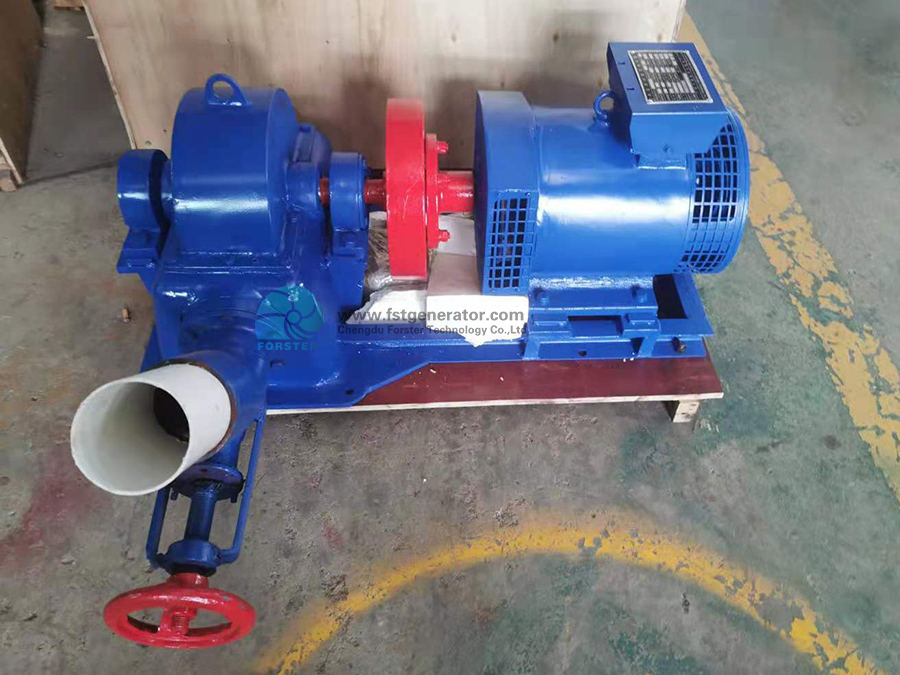Reaction turbine is a kind of hydraulic machinery that converts hydraulic energy into mechanical energy by using the pressure of water flow.
(1) Structure. The main structural components of reaction turbine include runner, headrace chamber, water guide mechanism and draft tube.
1) Runner. Runner is a component of hydraulic turbine that converts water flow energy into rotating mechanical energy. According to different water energy conversion directions, the runner structures of various reaction turbines are also different. Francis turbine runner is composed of streamline twisted blades, wheel crown and lower ring; The runner of axial-flow turbine is composed of blades, runner body, discharge cone and other main components: the structure of inclined flow turbine runner is complex. The blade placement angle can change with the working conditions and match the opening of guide vane. The blade rotation center line forms an oblique angle (45 ° ~ 60 °) with the axis of turbine.
2) Headrace chamber. Its function is to make the water flow evenly to the water guide mechanism, reduce energy loss and improve the efficiency of hydraulic turbine. Metal spiral case with circular section is often used for large and medium-sized hydraulic turbines with water head above 50m, and concrete spiral case with trapezoidal section is often used for turbines with water head below 50m.
3) Water guide mechanism. It is generally composed of a certain number of streamlined guide vanes and their rotating mechanisms uniformly arranged on the periphery of the runner. Its function is to guide the water flow to the runner evenly, and change the through flow of the hydraulic turbine by adjusting the opening of the guide vane, so as to meet the load requirements of the generator unit. It also plays the role of water sealing when it is fully closed.
4) Draft tube. Part of the remaining energy in the water flow at the runner outlet has not been utilized. The function of the draft tube is to recover this energy and discharge the water downstream. Draft tube can be divided into straight cone shape and curved shape. The former has large energy coefficient and is generally suitable for small horizontal and tubular turbines; Although the hydraulic performance of the latter is not as good as that of the straight cone, the excavation depth is small, and it is widely used in large and medium-sized reaction turbine.
(2) Classification. The reaction turbine is divided into Francis turbine, diagonal turbine, axial turbine and tubular turbine according to the direction of water flow passing through the shaft surface of the runner.
1) Francis turbine. Francis (radial axial flow or Francis) turbine is a kind of reaction turbine in which water flows radially around the runner and flows axially. This kind of turbine has a wide range of applicable head (30 ~ 700m), simple structure, small volume and low cost. The largest Francis turbine that has been put into operation in China is the turbine of Ertan Hydropower Plant, with rated output power of 582mw and maximum output power of 621 MW.
2) Axial flow turbine. Axial flow turbine is a kind of reaction turbine in which water flows into and out of the runner axially. This kind of turbine is divided into fixed propeller type (screw propeller type) and rotary propeller type (Kaplan type). The blades of the former are fixed and the blades of the latter can rotate. The discharge capacity of axial-flow turbine is larger than that of Francis turbine. Because the blade position of the rotor turbine can change with the load change, it has high efficiency in a large range of load change. The cavitation resistance and mechanical strength of axial-flow turbine are worse than those of Francis turbine, and the structure is also more complex. At present, the applicable head of this kind of turbine has reached more than 80m.
3) Tubular turbine. The water flow of this kind of turbine flows axially from the axial flow to the runner, and there is no rotation before and after the runner. The utilization head range is 3 ~ 20.. It has the advantages of small fuselage height, good water flow conditions, high efficiency, low civil engineering quantity, low cost, no volute and curved draft tube, and the lower the water head, the more obvious its advantages.
According to the connection and transmission mode of generator, tubular turbine is divided into full tubular type and semi tubular type. Semi tubular type is further divided into bulb type, shaft type and shaft extension type, among which the shaft extension type is divided into inclined shaft and horizontal shaft. At present, the most widely used are bulb tubular type, shaft extension type and shaft type, which are mostly used for small units. In recent years, shaft type is also used for large and medium-sized units.
The generator of the axial extension tubular unit is installed outside the water channel, and the generator is connected with the water turbine with a long inclined shaft or horizontal shaft. The structure of this shaft extension type is simpler than that of the bulb type.
4) Diagonal flow turbine. The structure and size of diagonal flow (also known as diagonal) turbine are between Francis and axial flow. The main difference is that the center line of runner blade is at a certain angle with the center line of turbine. Due to the structural characteristics, the unit is not allowed to sink during operation, so the axial displacement signal protection device is installed in the second structure to prevent the collision between the blade and the runner chamber. The utilization head range of diagonal flow turbine is 25 ~ 200m.
At present, the largest single unit rated output power of inclined drop turbine in the world is 215MW (former Soviet Union), and the highest utilization head is 136m (Japan).
Post time: Sep-01-2021

